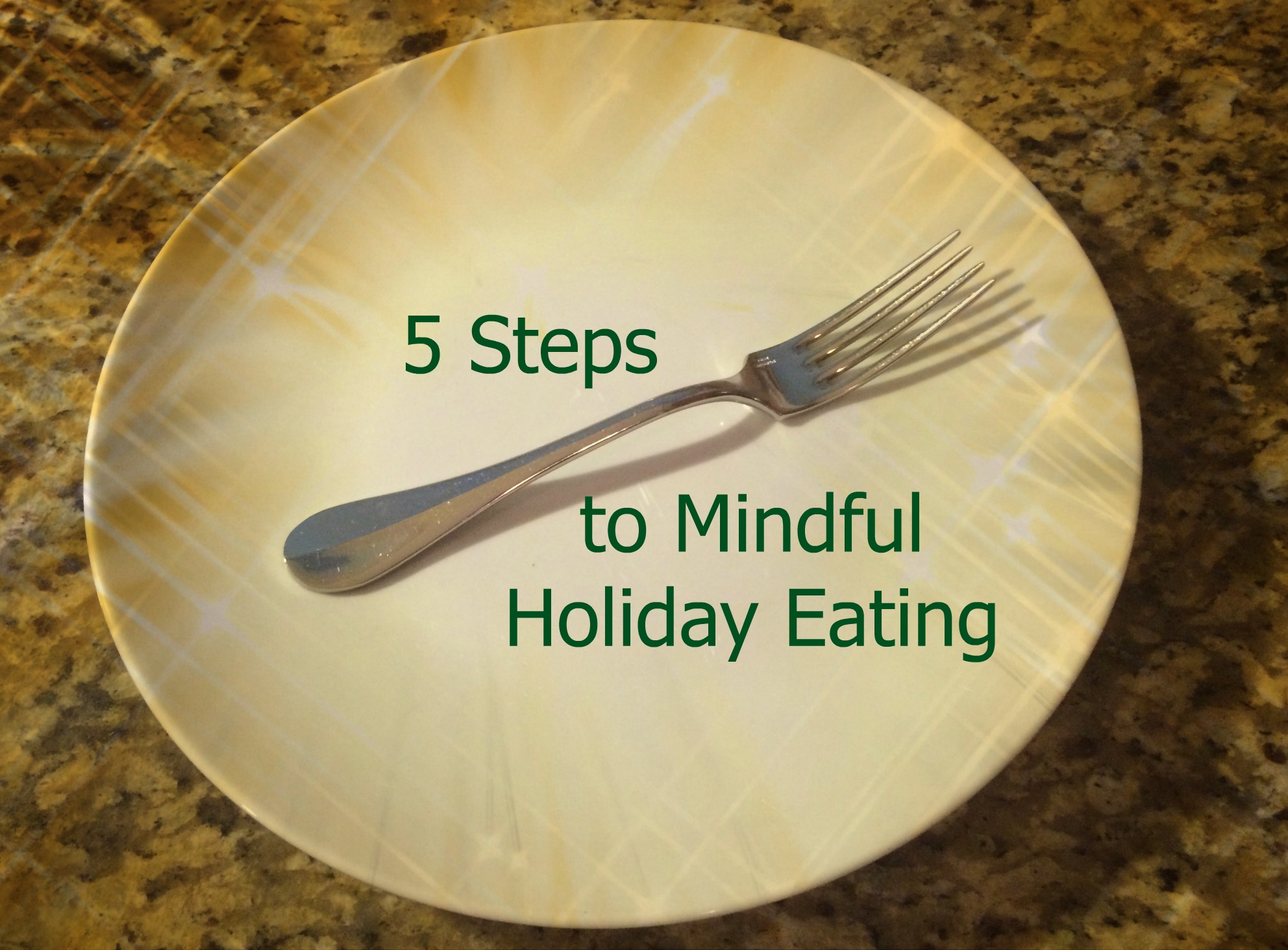With the holidays upon us, it is easy to get derailed from our normal healthy eating habits and eat mindlessly. We’ve all been there: you sit down at a party or an event with family and friends, you arrive hungry, and you start nibbling on appetizers. Before you know it, you’re stuffed full of snacks! Or you’re in such a hurry to get to work, you scarf down breakfast behind the wheel. Or you’re so busy feeding your kids dinner that you end up eating their scraps.
When you eat mindlessly, not only do you consume more calories than you need, but you also miss out on simply enjoying the meal. Let’s face it, when you eat in an unconscious state with no awareness of food, are you really even tasting it?
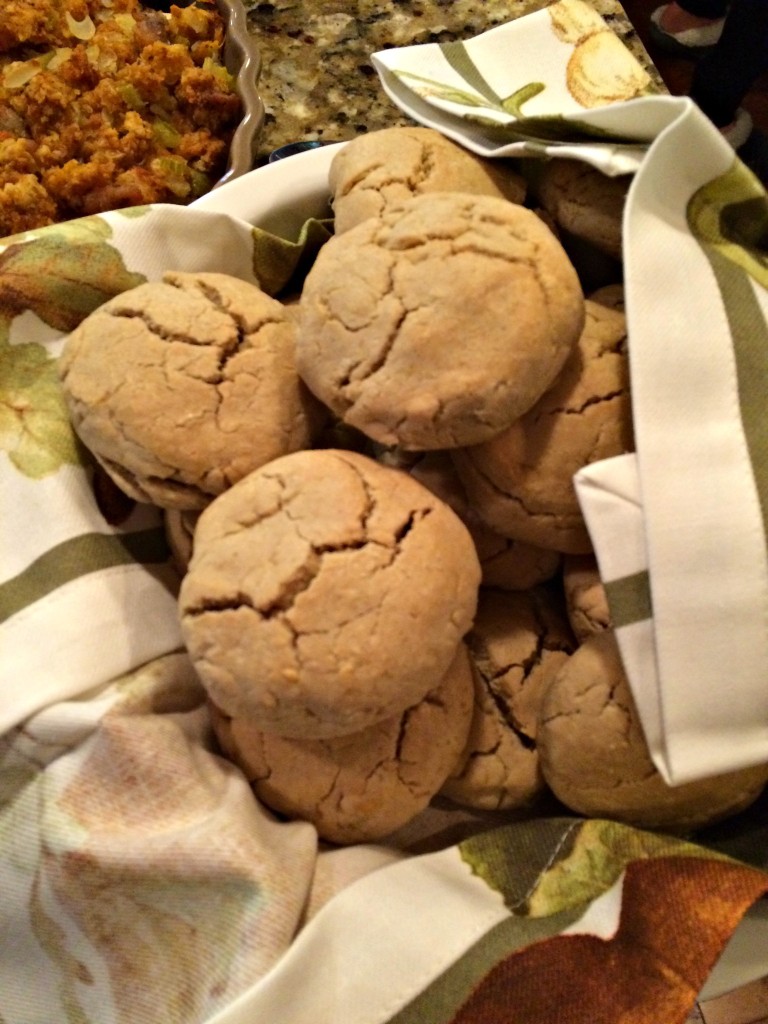
What is mindful eating?
On the contrary, mindful eating is a means of true nourishment, and it’s more than just sitting down for meals and chewing slowly. Mindful eating is one piece of a mindful living approach. Research shows the science of mindfulness shows that it can improve mood and alleviate depression and can contribute to greater overall health.
Mindful eating begins when you purchase food at the store and continues throughout the cooking process. It involves sitting down for meals, and taking the time to look at and smell your food. It means using all your senses to explore and savor the food, paying attention to what you’re eating and your reaction to it.
Mindful eating begets gratitude, especially for the farmers and ranchers that grow and harvest your meal. It’s important to know where your food comes from, whether it be your local farmers’ market or co-op, your favorite grocery store or butcher, and eating mindfully is a natural celebration of the food’s journey.
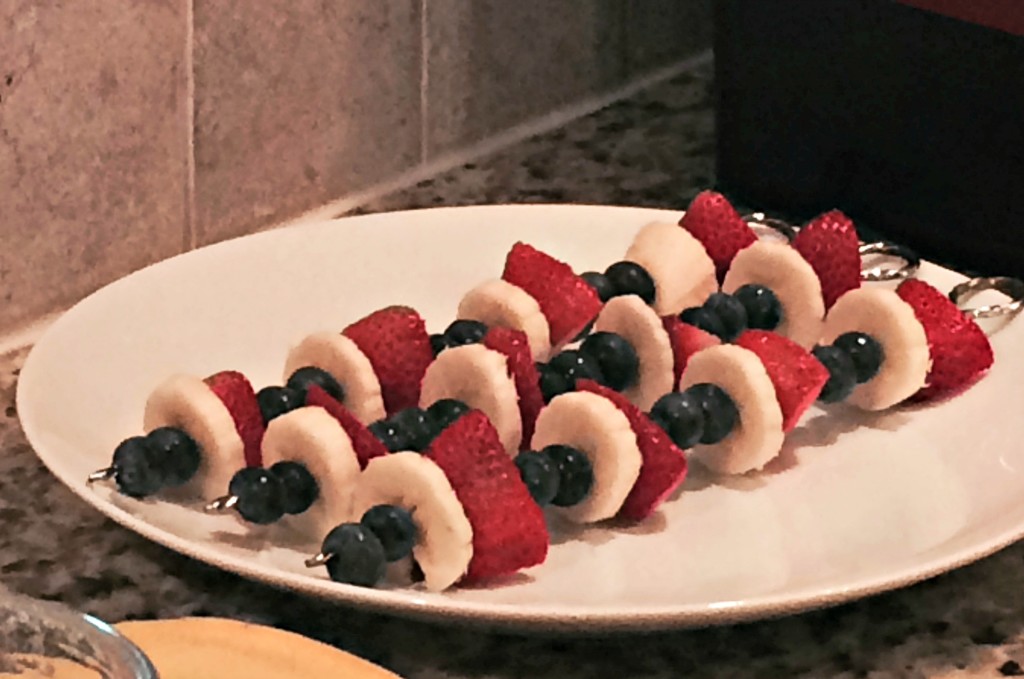
Eating mindfully at the holidays helps guide your food choices. When foods are labeled as being “good” or “bad”, it sets eaters up for feelings of guilt or anxiety around consuming those foods. But when you consciously choose what you eat, then you do so without judgment.
When you eat mindfully, you are better able to detect hunger and satiety cues. Remember that you want to set aside adequate time to consume a meal, in a quiet relaxed state (ideally) to help stimulate the parasympathetic nervous system (your “rest and repose state”, which facilitates better digestion). It takes 20 minutes for your brain to get the signal from your stomach that you are full.
With the holidays upon us, many people put off healthy eating approaches until the new year. There are so many opportunities to spend time with family, friends and co-workers celebrating special events in our lives. What better time to practice enjoying and feeling nourished from food and the connections it brings?
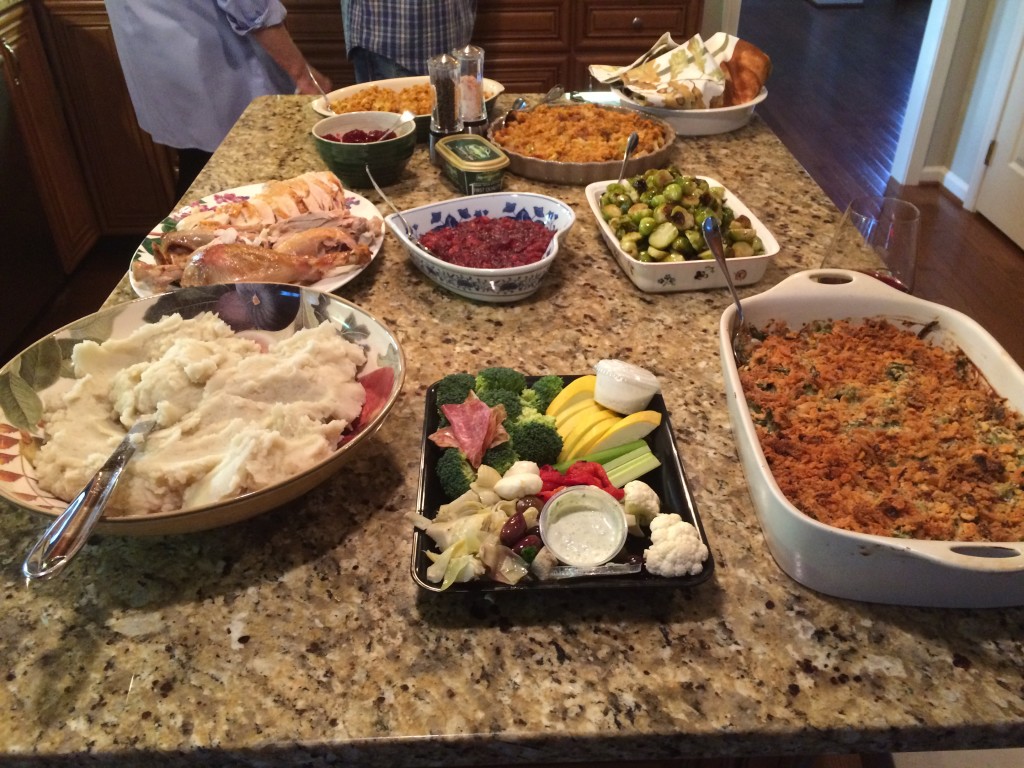
To fully experience your food, I like the idea of “Whole Body Eating” as outlined in Marc David’s book, Nourishing Wisdom: A Mind-Body Approach to Nutrition and Well-Being.
Steps to Mindful Holiday Eating
1. Make a conscious choice to eat.
Are you on auto-pilot with the rush of the holiday shopping, cooking, baking? Most of us are. Instead, before you put anything in your mouth, try asking yourself, “Am I really hungry?” Since eating fills emotional voids for many people, how often do we use eating to satisfy a hunger that has nothing to do with food? Giving attention to eating is the best way to heal food issues.
2. Ask your body what it wants.
Your body has an intuitive wisdom, and our needs will change. When you slow down long enough to consider what your body is asking for, you may be surprised! If you are craving chocolate, you may in fact need magnesium rich foods, like dark chocolate.
3. Eat with awareness
This is the most important step in mindful holiday eating. Try not to eat in a stressful state, but instead be fully present with your food. Pay attention to it and take in all the sensations-the smells, the colors, even the ambiance and company around you. If you don’t eat with awareness, you are not going to be satisfied. As David points out, “ we may eat a nutritionally complete meal, yet remain undernourished”
4. Listen for feedback
After the meal, take a few deep breaths and listen to your body. Are you satisfied? Do you feel energized? Did you overeat? What changes can you make in the next meal?
5. Release the meal
Once your meal is over, let it go. This is difficult to do because many of us are thinking about diets, body image and meals yet to come. When you consciously choose what to eat and eat with awareness, you can eat without guilt and move on.
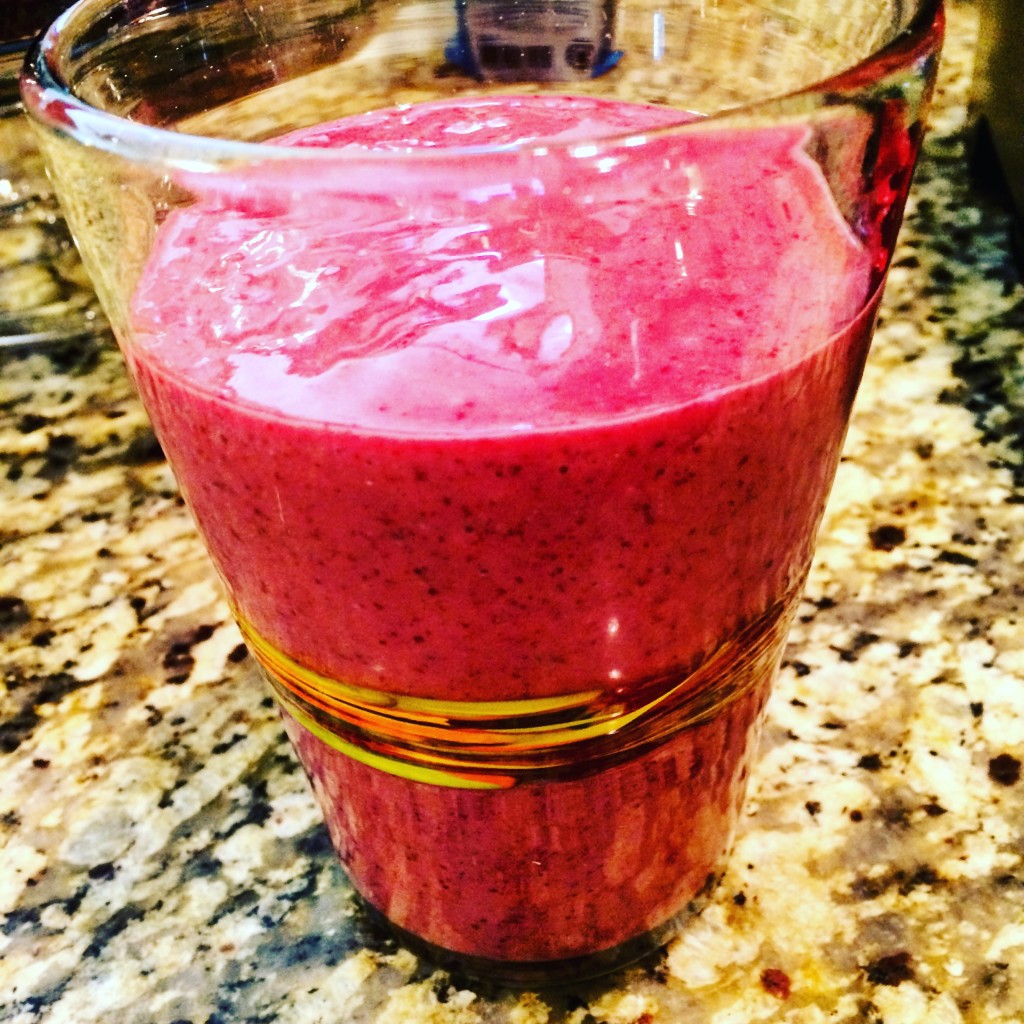
I’m not going to tell you to count calories and feel bad about holiday indulgences, because it is important to keep a healthy attitude towards food. Food is nourishing; it brings people together and is meant to be enjoyed, especially during this time of the year.
There are other ways to approach mindfulness at the holidays that can help with the food decisions and their fallout.
- Exercise any day that you plan to gather with family and friends. This helps solidify better food decisions.
- Don’t let yourself get hungry. Make sure that you’ve had a solid breakfast with protein, complex carbs and healthy fats to keep you satiated.
- Bring a healthy dish to your event. Green vegetables are great.
- Enjoy your favorite foods and just manage smaller portions of sweeter foods.
Just remember, with a bit of advanced planning and a commitment to eating mindfully, you can enjoy this time of the year and all of its celebrations to the fullest!

Cynthia Henry Thurlow is a Wellness Coach at CHT Wellness. A mom of two, Cynthia is also a Nurse Practitioner and a functional and holistic nutrition advocate and trained with the Nutritional Therapy Association. To learn more about Cynthia and how to connect with her see the Mindful Healthy Life Contributors page.
This page includes affiliate links.
